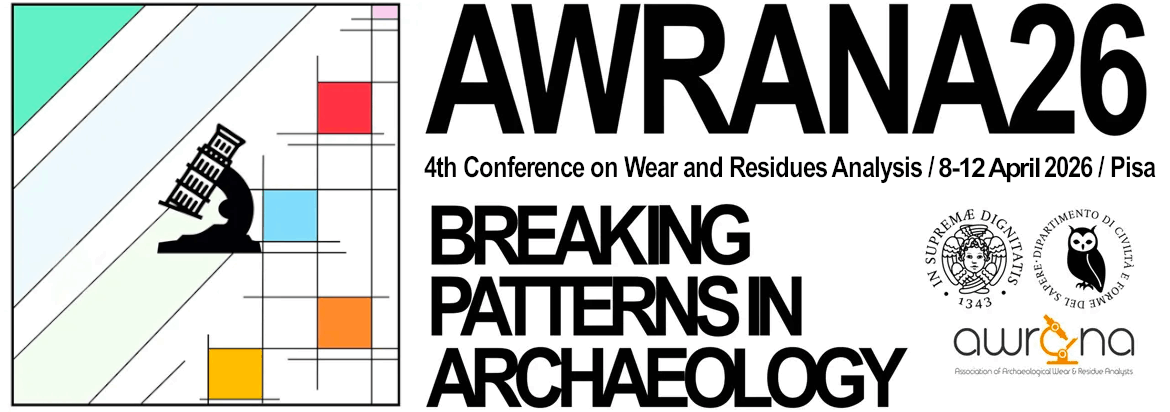The 4th edition of the Association of Use-Wear and Residue Analysts Conference will be organized in six main Themes:
Theme 1. The Social and Spatial Dimension of Work. This theme investigates the intertwined social and spatial aspects of technology and production activities. It examines how tools and technologies embody social values, the division of labor, and diverse modes of production (e.g., specialized vs. communal). Furthermore, it explores the spatial distribution of these activities, offering insights into mobility patterns, site complementarity, and the delineation of social and economic territories. By integrating social and spatial perspectives, this theme establishes a comprehensive framework for analyzing the cultural, economic, and organizational dynamics of production.
Theme 2. Artisans, Crafters, and Consumers. This theme delves into the technical aspects of material production by examining artisanal and crafting practices. It invites studies focusing on the chaîne opératoire, raw-material transformations, artefact- and tool-making techniques, and the interplay between technical expertise and cultural traditions. By highlighting the material and technical knowledge embedded in production systems, this theme bridges technological studies with broader socio-economic contexts.
Theme 3. Food, Diet, and Resource Management. Focused on uncovering the relationships between diet, food production, and cultural practices, this theme highlights the application of microwear and residue analysis to artefacts, tools, human and animal teeth, bones, and sediments. Submissions may explore subsistence strategies, animal management practices, resource exploitation, and food-related activities, offering insights into the complex interplay of environmental, technological, and cultural factors in ancient diets.
Theme 4. Cognitive and Symbolic World. This theme investigates how technology, traceology, and residue analysis can illuminate cognitive processes and symbolic understanding in past human groups. It encompasses studies on artefact use in ritual activities or ritual spaces, the identification of symbolic materials like pigments, and the cognitive implications of tool design and decoration. By bridging material culture with cognitive archaeology, this theme seeks to uncover the mental and symbolic dimensions of ancient societies.
Theme 5. Refining Theory and Methodology. This theme showcases theoretical, technical, and methodological advances, highlighting innovative approaches in traceology and residue analysis. It emphasizes the standardization and enhancement of precision, the implementation of new quantitative techniques, and the integration of diverse analytical methods in the study of ancient material culture, both for data acquisition and processing. Additionally, it addresses the theoretical dimensions of the discipline and their practical applications, advancing the field’s methodological and conceptual foundations.
